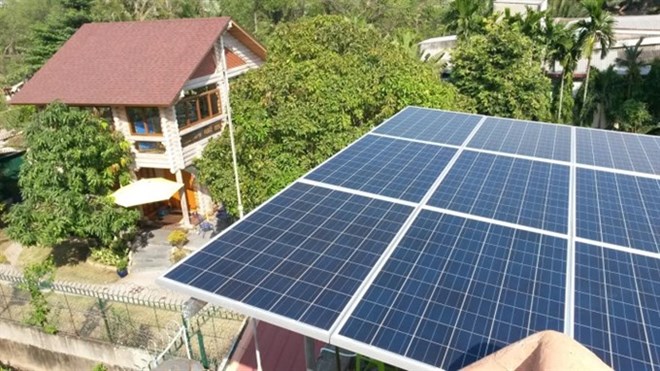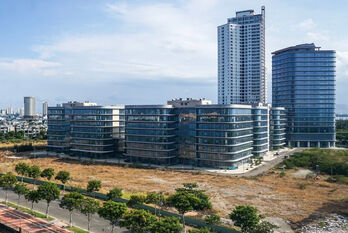
Solar panels installed on houses in HCM City (Source: ves-vn.com)
The event was jointly held by the Centre for Hands-on Actions and Networking for Growth and Environment (CHANGE) and the Centre for Regional and Urban Studies under the Union of Science and Technology Associations (USTA) .
Nguyen Phuong Duy from the municipal Department of Industry and Trade said the city has implemented important items in the project “Developing HCM City into a smart city in 2017-2020, with a vision to 2025”, focusing on promoting the use of smart and clean energy, saving and effective energy use.
Participants heard that local residents have consciously used solar energy in daily activities. Over 12,000 solar energy water heaters have been used in HCM City so far. A great number of customers installed solar electrify systems connected to the national grid. Many waste-to-energy plants were also formed in the city, helping creating safe energy sources.
“Smart city development should include the ability to deal with environmental challenges and clean energy technology solutions will play a very important role,” said Tran Ngoc Giao, chairman of USTA.
He added that many policies and activities have been taken to promote the development of household-scale solar energy model, noting that the city aims to raise the total capacity of solar electricity to 200 MW in 2025.
Hoang Thi Minh Hong, Director of CHANGE, suggested the Government focus on increasing the generation of renewable energy because in 2016 Vietnam and 47 other nations signed a pledge to have renewables accounting for 100 percent of energy generation by 2050.
“I expect that HCM City, with its geographic, climatic, economic, technological and human resource potential, will lead the nation in renewable energy”, she added.
Statistics show that HCM City saved 3.1 billion million kWh and reduced 2.039 billion tonnes of CO2 in 2011-2017.
The city plans to have 0.8 percent of electricity from wind by 2020, 1 percent by 2025 and 2.1 percent by 2030.
For solar, the targets are 0.5 percent, 1.6 percent and 3.3 percent. They are 1 percent, 1.2 percent and 2.1 percent for biomass./.
VNA
 Da Nang invests over 200 billion VND in semiconductor chip design, AI development
Da Nang invests over 200 billion VND in semiconductor chip design, AI development



